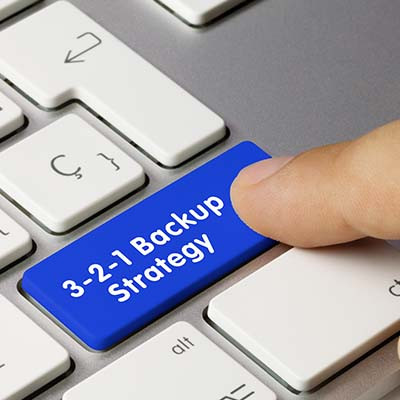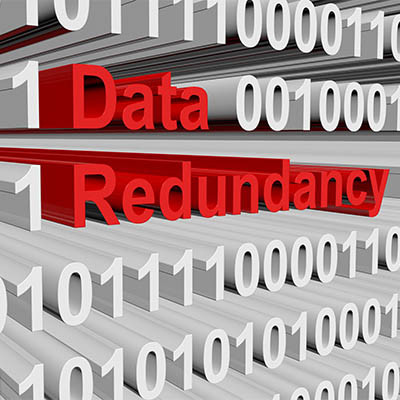Ferrum Technology Services Blog
File efficiency is not something that is talked about very often as a key component to running a successful business, but it certainly is. Keeping an organized digital environment saves a lot of time and keeps projects and services working efficiently. Let’s take a look at why file efficiency is important and how to achieve it.
We cover data backup and disaster recovery quite a bit, and you might be familiar with some of the terms and strategies we discuss. Today, we’re taking a deeper dive into the 3-2-1 rule and its crucial role in your business’ disaster recovery plan. Let's explore how the 3-2-1 rule can strengthen or weaken your data infrastructure.
There is an almost comical laundry list of problems that all businesses should be prepared for, but what’s not funny whatsoever is what happens when you fail to do so. The term “BDR” is often used as an umbrella term to describe what kind of preparation your organization needs, and today, we want to dive into some of the details that you should know.
When it comes to your business’ data backup and disaster recovery, you want to have clear outcomes that you aim for, as well as metrics that help you gauge success. Today, we want to highlight some of the most important metrics associated with data backup and disaster recovery, as well as the importance of testing your systems. Trust us when we say that a solid data backup and disaster recovery strategy is crucial to the success of any business—including yours.
Every year on March 31st, World Backup Day serves as a dedicated occasion to emphasize the crucial role of regular data backups in ensuring the seamless continuity of information. While this awareness day effectively underscores a fundamental best practice, we staunchly advocate for an ongoing commitment to continually maintaining and protecting backups, extending beyond the confines of a singular day.
Data and technology drive modern business, and as such, data backup and disaster recovery are crucial to the continued success of any organization. There is so much at risk that it would be counterproductive to ignore these unforeseen disasters. Disaster Recovery as a Service, or DRaaS, is an effective way to combat the omnipresent threat of data loss.
In order to protect your organization’s important digital assets you need to build something that you spend most of the time trying to avoid in every other facet of your business, building redundancy. Redundancy is seen as wasteful in most situations, but with your data being so important to your business, ensuring that you have duplicate copies of it is essential.
Data Backup and Disaster Recovery are essential components of any modern business. As businesses become increasingly reliant on digital data, it's essential to have strategies in place to ensure that your data is safe and secure in the event of a disaster. In this blog post, we'll cover the key components of an effective Disaster Recovery strategy to ensure the safety of your business' data backup. Read on to learn more about Disaster Recovery strategies and how to best protect your business data.
We focus pretty heavily on data backup as an important solution that all businesses should use, and for good reason. It can be all the difference between losing your business’ future or preserving it. We know you don’t like to hear it, but investing in a proper data backup solution is well worth the cost, even if you never have to use it.
We often use the term “redundant” to describe technology, and it’s easy to see this word and think about it in a negative way. However, in business technology, the exact opposite is true, and redundancy is widely seen as not just an important component of any successful IT strategy, but a critical one. What does redundancy mean to your business technology, and how can you make sure you implement it in the appropriate way?
In today’s age of ransomware, climate change, and worldwide pandemics, a lot can happen that could spell trouble for your organization. This is why it is so critical for your company to have a business continuity plan. There are many factors that contribute to a successful business continuity plan, one of which is a disaster recovery plan. But wait, aren’t those the same thing? Not quite.
Data backup is one of the most important parts of protecting your digital assets, but many organizations are unable to successfully pull it off without a hitch. We’ll help you get a feel for what should happen when you set up your data backup system, what happens when you initiate a backup, and how to proceed with restoring it.
One of the best investments you can make in your IT infrastructure is implementing a data backup and disaster recovery solution. Not only is it a crucial part of any business continuity plan, but it also helps to future-proof your business in the event of a potentially disastrous scenario. There are three big reasons why you should consider implementing data backup and disaster recovery, and if you fail to do so, you are putting your company at risk for no real reason.
Disasters are not something relegated to specific locations or industries. All organizations are susceptible to a data loss disaster or two, no matter which category they fall under. As a business owner, it should be your prerogative to protect your company from the various disasters that could create downtime, destroy data, and disrupt operations.
If you were to lose your business’ data, would you be able to continue operations? Usually not. This is why you need to take precautions before you inevitably suffer from an unpredictable situation that puts your data at risk. Unfortunately, the average small business might not think they are at risk, a notion we are trying to dispel. If your organization is considering backup and disaster recovery, we want to help you better understand data redundancy.
If you’re at all familiar with us, you’re probably aware of how highly we rank data backup. If your business creates or stores any data (which we guarantee it does) you need to have a backup to protect it, as simple as that. Let’s take a few moments to review how a BDR (Backup and Disaster Recovery) can benefit your business and its long-term continuity.
Every business owner wants to protect their data. Even if they don’t pour money into doing so, they typically still understand the importance of it. That’s why three-out-of-every-four businesses perform a backup at least once per week. It’s still good to be reminded how to make sure your backup can work for you. Let’s go over a few basic considerations to make if you want a data backup that you can trust.




















